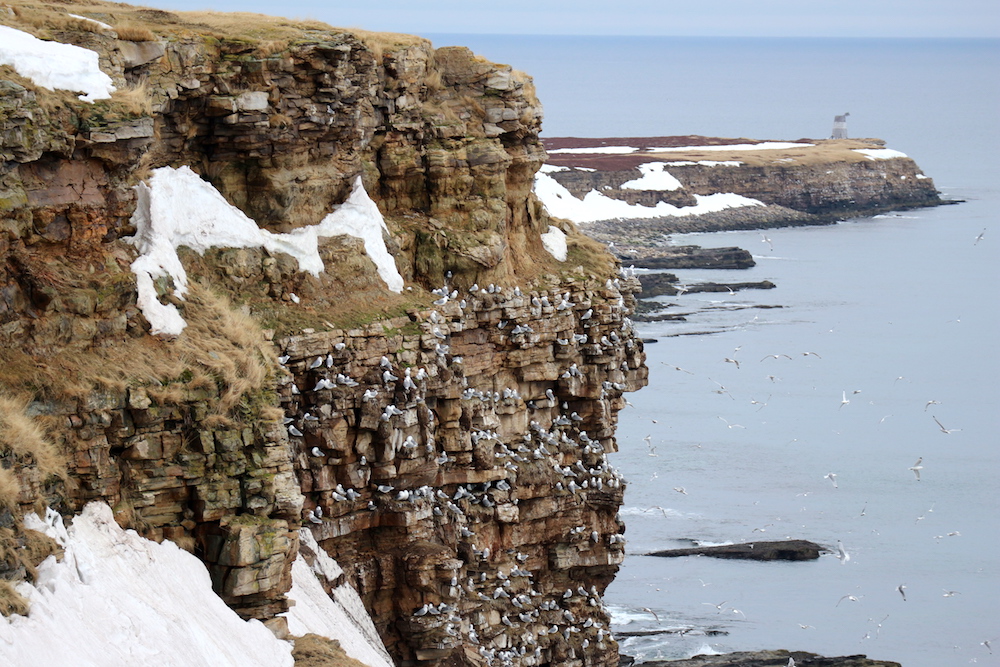What is a River?
This and other deep questions are explored when international research confirms that biodiversity benefits from the rights and knowledge of indigenous peoples. A new book discusses examples that range from the Näätämöjoki Skolt Sámi co-management experiences in Finland to Kogui ecological governance in northern Colombia. Snowchange rewilding work is summarized for over a decade of work.
An international, peer-reviewed book published today in the prestigious science publisher Routledge series ”Indigenous Wellbeing and Enterprise: Self-Determination and Sustainable Economic Development” compiles multidisciplinary case studies on indigenous peoples and biodiversity. The co-management experiences of the Skolt Sámi people of the Näätämöjoki River are included, as are the to-date little-known Kogui of the Sierra Nevada mountains of Colombia.
The book is edited by Canadian professors Rick Colbourne (Carlton University) and Robert B. Anderson (University of Regina). From Finland, contributions to the book have been written by Skolt Sámi expert Pauliina Feodoroff and Adjunct Professors Aili Pyhälä (University of Helsinki, Development Studies) and Tero Mustonen (Snowchange Cooperative, IPCC).
In the case of Finland, Feodoroff and Mustonen question the ways of how can a river be known. The focus is on the Arctic Näätämöjoki river. Utilizing limnology, geography, ecology, ichthyology, and Skolt Sámi traditions equally, the case study shows that there are essences and particularities of the river that only the deepest circles of Sámi indigenous knowledge can shed light on. On the other hand, this kind of dialogue between in-depth local knowledge and science requires long-term, confidential and interactive cooperation building on trust.

Coastal fjords are a Sámi socio-ecological system. Näätämö is the interface between the Barents Sea and Skolt Sami lands.
The meta-level layout of Näätämö’s case study is a framework portraying the ways in which nature is known as reflecting the use, monitoring and protection of natural resources. The work is at the same time a multidisciplinary analysis of the development of Finnish modernism and natural resources policies (which has relied mainly on expert and scientific snapshots for decision-making), and a long essay on cultural change, fishing, gendered and embodied nature experience and knowledge, and ultimately about the ways in which moral rights define our interaction with the nature(s) of Näätämöjoki river. Importantly, this case portrays the first ever complete restoration and rewilding of an Arctic river system based on Skolt Sámi knowledge and science, and the rehabilitation of the Vainosjoki catchment area in the Näätämö catchment area.
The case study includes a detailed analysis of the analysis of post-war natural resource policy and environmental problems, but turns to examine what Näätämö means and is as a river for the Skolt Sámi. At the same time, the knowledge of indigenous peoples signals that the scale of the current problems has not yet been fully realized, even though new ways of knowing, such as through biocultural approaches, are improving this.
The chapter also brings national natural resources and environmental research into a dialogue at the crossroads of linguistic-ecological empiricism, languages and dialects, traditional knowledge, corporeality, gendered knowledges, loss and emplacement. Through the Näätämö case, the book questions how the interpretation and monitoring of ecosystems that are in the midst of large drivers of change (external and internal land use, climate change, long-term pollution, plastics, etc.) could be renewed in order to consult, co-learn, and find solutions to “wicked” problems, by listening to and accepting traditional Sámi knowledge.
Aili Pyhälä, in turn, takes an even more critical perspective to the broader notion of ‘development’, and demonstrates the blatant oxymoron inherent to the notion of “sustainable economic development” as it is framed in and imposed by the global political and economic system onto biocultural settings like the Sierra Nevada, where it is neither fitting nor welcome.
The chapter by Pyhälä explores the tensions between indigenous self-determination on the one hand, and supposed “development” interventions and impositions on the other, amongst the Kogui peoples of the Sierra Nevada de Santa Marta, Colombia. This dynamic is examined by juxtaposing the sustainable modes of socio-ecological and spiritual governance of the ancestral territory of the Kogui, with past and continued encroachment on land and sacred sites through land-grabbing and extractivism, attempted assimilation, and unsustainable tourism.
Pyhälä sheds light on what the Kogui themselves have to say with regard to ‘development’, highlighting the rights they have to their own sustainable and alternative pathways. The chapter presents recommendations on how to tackle current complexities whilst supporting the socio-environmental rights and self-determination of the Kogui.



